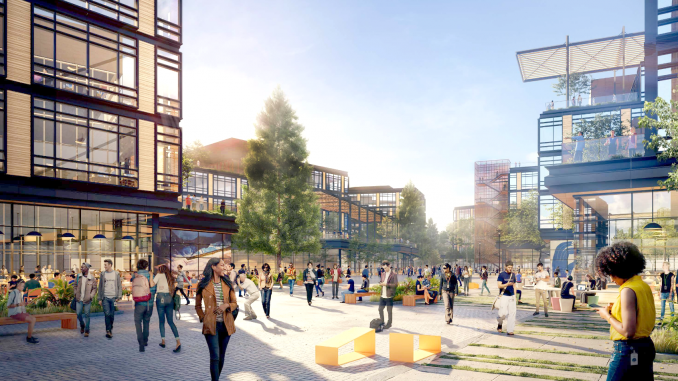
BY EMILY MIBACH
Daily Post Staff Writer
The pressure on tech companies to help allieviate the housing crisis may result in more housing on Facebook’s proposed Willow Village campus than the social network company had first planned.
Originally, Facebook said it would build 1,500 homes on the 56-acre Village site, which is now a business park once owned by the company Prologis on Willow Road. The company also plans to build 1.75 million square feet of office space at that location, enough for 9,500 employees. But in June, Facebook filed plans with the city for 1,735 homes.
Now, as the city prepares to send those plans to an independent consultant to prepare an environmental impact report, or EIR, the company is saying it’s OK with them if the report studies two alternatives, 1,500 homes and 2,000 homes.
Facebook said both alternatives will give City Council “flexibility” when the project comes up for a vote.
Even if 2,000 homes are built, it wouldn’t come close to mitigating the housing demand created by 9,500 new employees, however.
Redwood City’s Planning Commission on July 30 took a more aggressive approach toward fully mitigating the housing demand of a mega project.
Redwood City is considering a proposal by the national real estate developer Greystar to build 550,143-square-feet of office space on a six-block parcel at 1601 El Camino Real where Towne Ford is located.
The development would create 2,750 jobs, based on the assumption of one worker for every 200 square feet of office space.
The proposal also calls for 291 apartments.
The Planning Commission decided that the EIR for the Greystar project should include an alternative that would determine how many homes would need to be built to fully mitigate the housing impact of the development’s new jobs.
‘Full mitigation’
The idea that a development should fully mitigate its housing impact is also a thrust in Santa Clara County’s examination of Stanford University’s request to expand its campus by 3.5 million square feet.
In fact, the jargony term “full mitigation” has caught on with the public. At hearings on the Stanford plan, those in favor of more housing have held up signs simply saying “full mitigation.”
In Menlo Park, the final decision about what the environmental impact report should study will fall to City Council. On Tuesday, council will consider a budget matter regarding the EIR, but no date has been set for when council will decide the scope of the study. At that time, however, council could require the study to include a “full mitigation” alternative, even though Facebook hasn’t suggested such a thing.
EIRs are funded by developers but they’re done by consultants who are supposed to be independent. An EIR will identify the impacts of a project and offer solutions.



